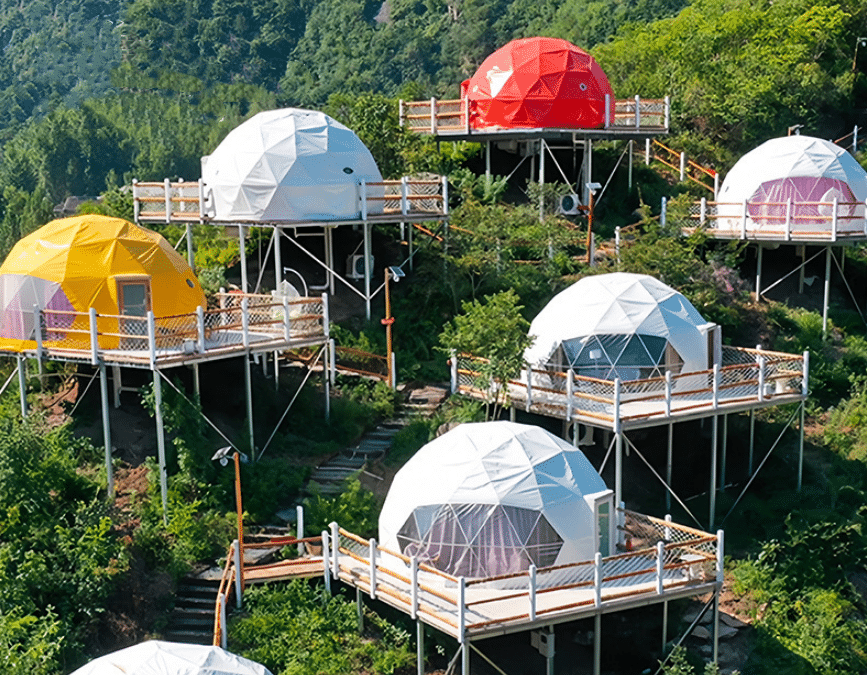Table of Contents:
- Introduction to Glamping Tents
- Design and Structure
- Materials Used in Glamping Tents
- Comfort and Amenities
- Versatility and Locations
- Cost Comparison
- Environmental Impact
- Conclusion
- Call to Action
1. Introduction to Glamping Tents
Glamping, a blend of glamorous and camping, elevates the traditional camping experience to a level of luxury and comfort not typically associated with tents. Unlike regular tents, glamping tents are designed with both style and functionality in mind, offering amenities that might remind one more of a hotel than a typical campsite. This post explores what sets glamping tents apart, from their robust design to their luxurious interiors.
2. Design and Structure
Glamping tents often feature unique and spacious designs that stand out from the basic structures of regular camping tents. Key differences include:
- Architectural Variety: From bell-shaped tents, yurts, safari tents, to teepees, glamping tents come in various shapes and sizes, each offering a distinct aesthetic and experience.
- Enhanced Stability: These tents are typically constructed with stronger frameworks to withstand diverse weather conditions, making them ideal for semi-permanent setups.
3. Materials Used in Glamping Tents
The materials used in glamping tents are selected for durability, weather resistance, and aesthetics:
- Canvas and Polyester: High-quality canvas is commonly used for its robustness and ability to block out elements, while advanced polyester can offer lighter, yet durable alternatives.
- Insulation: Unlike regular tents, many glamping models include insulated walls, which help maintain a comfortable internal temperature regardless of external conditions.
4. Comfort and Amenities
Glamping tents are synonymous with comfort, often equipped with features that are rare in regular tents:
- Beds and Bedding: Full-sized beds with high-quality mattresses and plush bedding.
- Furniture: Interior spaces often include furniture like chairs, tables, and even wardrobes.
- Utilities: Some tents come with power outlets, lighting, and even climate control systems.
5. Versatility and Locations
Glamping tents can be set up in a variety of locations, from remote beaches to upscale resort environments:
- Remote and Natural: Positioned in secluded settings, these tents offer a peaceful retreat in nature without sacrificing comfort.
- Resort and Themed: Many are part of larger glamping resorts that provide additional services such as guided tours, dining facilities, and recreational activities.
6. Cost Comparison
Investing in a glamping tent involves higher upfront costs compared to regular tents, reflecting their superior construction and features. However, the investment can be worthwhile for those looking to offer a luxury camping experience, whether personally or commercially.
7. Environmental Impact
Glamping tents are often designed with sustainability in mind:
- Eco-friendly Materials: Many manufacturers use recycled materials or sustainably sourced fabrics.
- Low Impact: The design and installation of glamping tents typically have a minimal environmental footprint, preserving the natural setting.
8. Conclusion
Glamping tents offer a luxurious and comfortable alternative to traditional camping. With their robust design, high-quality materials, and plush amenities, they provide an outdoor experience that doesn’t skimp on comfort. Whether set up for a personal getaway or as part of a commercial venture, glamping tents cater to those seeking a blend of nature and luxury.

